The Floating Habitat
Some architects pushed their creativity by challenging themselves to go beyond the usual and create a floating structure. This floating structure is not new to us. It already existed for a long time in cities like Amsterdam and Hong Kong. People lived on houseboats, and there are growing floating villages as early as the 1970s. There are a lot of reasons why people adapted to lived in water. Some of these are shortage in development spaces, extreme weather, and above all, the rise of sea levels.
We can found floating structures everywhere from Thailand to Nigeria, which houses theaters, schools, and housing. Floating structures are a unique sustainability solution for modern homes. Most floating structures use biodegradable materials and solar panels. When we think of floating structures, we always associate them with boats, but it is not always true cause these structures are contemporary and similar to what was on land.
Beyond its environmental benefits, floating architecture offers a unique experience of the ambiance of the surrounding. When technology and human behavior quickly change than ever, some architects believe that floating architecture changes how the way we live. Here are some floating structures that redefine architecture by themselves.
Archipelago Cinema, Thailand
The Archipelago Cinema is at Nai Pi Lae lagoon in Thailand’s Kudu Island. They build the cinema by adapting how local fisherman crafted their lobster farm. A dramatic landscape of towering rock and lush vegetation, and crystal-clear water surround the movie theater. The structure can sail to different seas to bring luxury film. Ole Scheeren designed the cinema, which held the final night of Film on Rocks Yao Noi.

An aerial view of Archipelago Cinema, Kudu Island, Thailand. (archdaily)
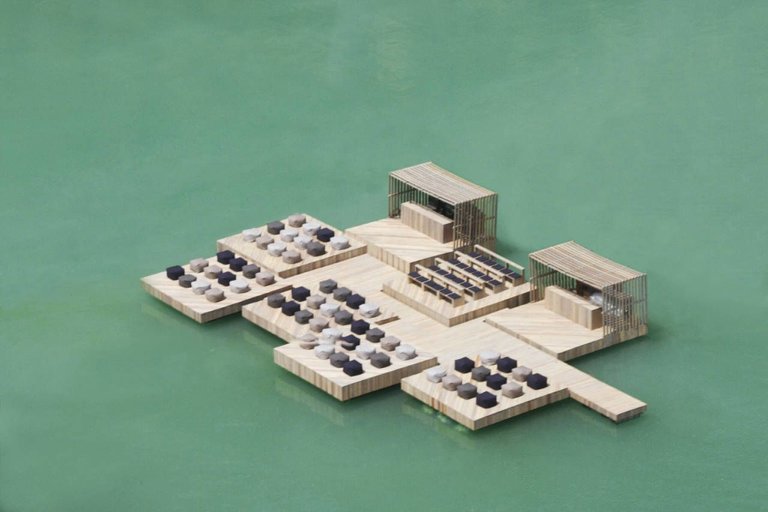
The cinema floating structure. (archdaily)
Drijf in Lelystad, The Netherlands
Drijf in Lelystad means Float in Lelystad. It is a residential community in the Netherlands, which Amsterdam-based firm, Attika Architekten, designed. They build timber-frame houses in the concrete caisson that fit the preference of each family. Each home has an unobstructed view of the surroundings while its walls and ceiling reflect the water. It is abundant in daylight and has water terraces. The facade panels of each home have matching colors that blend well with the surroundings. The floating house is at Urk, which is 40 kilometers from Lelystad.
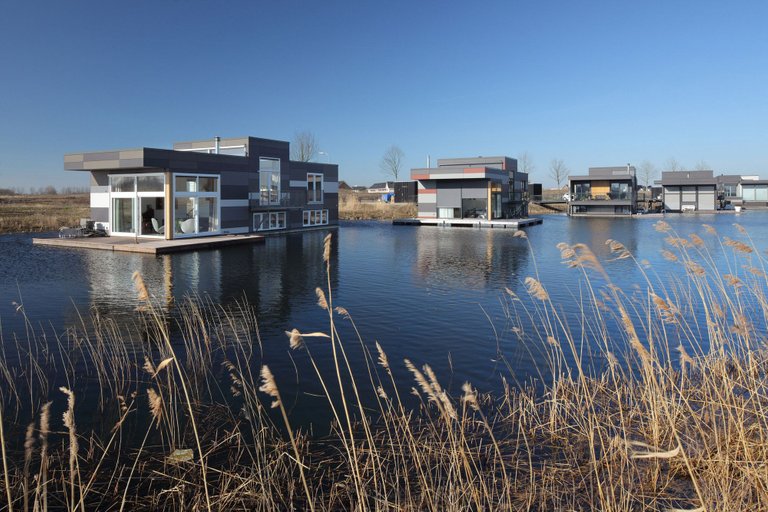
Drijf in Lelystad, The Netherlands. archdaily
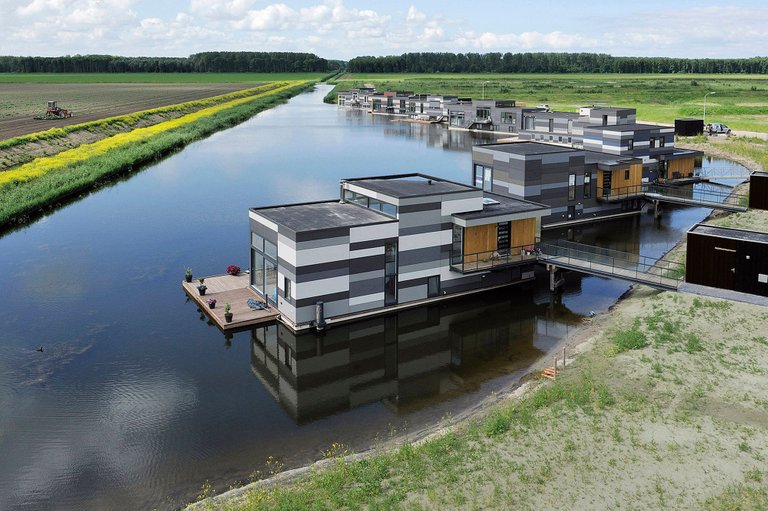
Drijf in Lelystad, The Netherlands. archdaily
Seoul Floating Islands, South Korea
Seoul Floating Island is part of the Han River Renaissance, which revitalize the Han River. The floating structures are a collaboration between H Architecture of New York and the Haeahn Architecture of Seoul. The Seoul Floating Island consists of three buildings, which depict the blooming stages of a flower. They constructed the structures using glass, wood, and steel. The island is known as Sebit Dungdungseom.
The Island Terra, the smallest of the islands and the seed, houses water sports and leisure activities, which is popular in the Han river. The Island Viva represents the bud and is the place for exhibits and entertainment. On the other hand, the Island Vista depicts the blossom stage and is the largest among the three. It can accommodate up to 700 people at once.
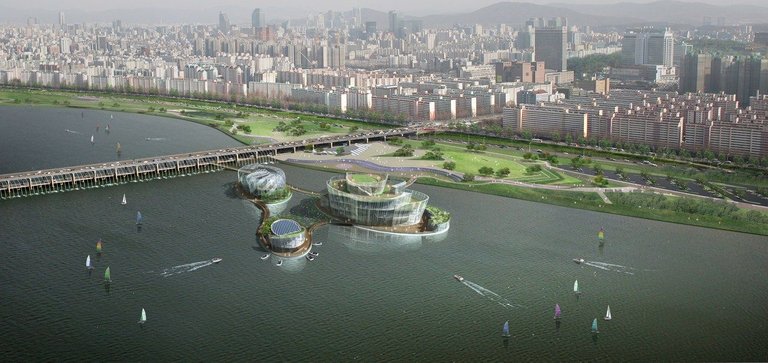
An aerial view of Seoul Floating Islands, South Korea. archdaily
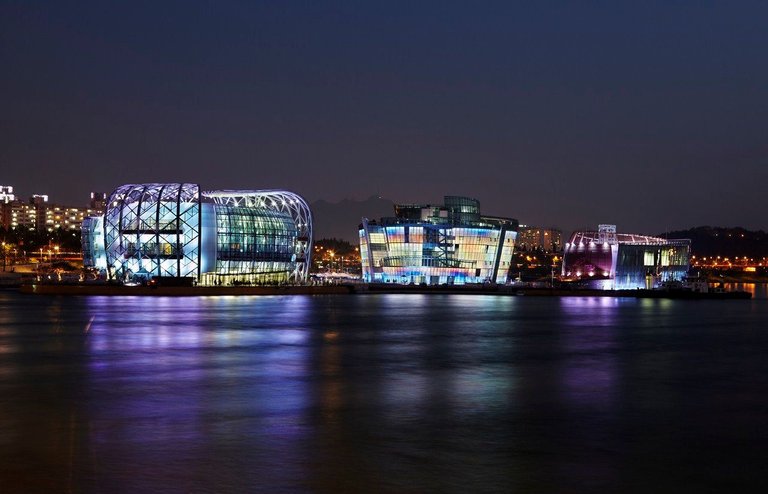
Seoul Floating Islands at nigth. archdaily
Hasle Harbour Bath, Danish Island of Bornholm
The Hasle Harbor Bath is in The Baltic Sea at the historic fishing town of Hasle. They constructed it to foster tourism in the locality. It aims to compensate for the declining fishing industry in the area due to changing of routes. The Scandinavian firm, White, designed the floating structure. The Hasle Harbor Bath comprises a floating platform with two bleacher-like sitting areas.
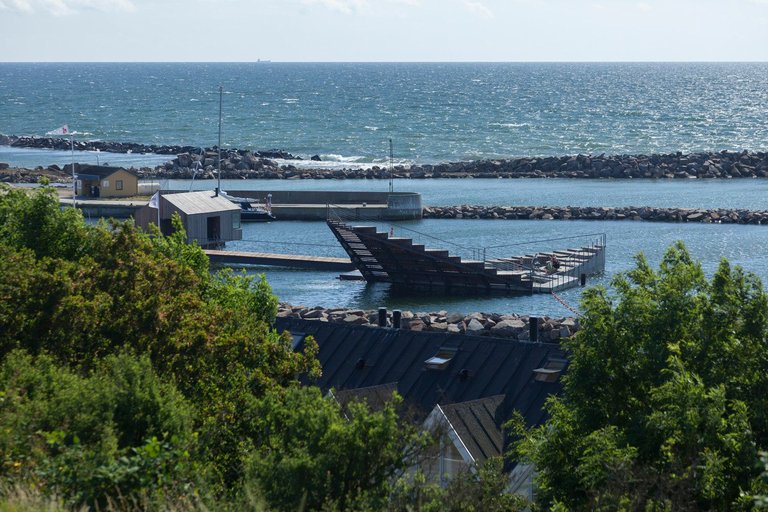
Hasle Harbour Bath, Danish Island of Bornholm. (archdaily)
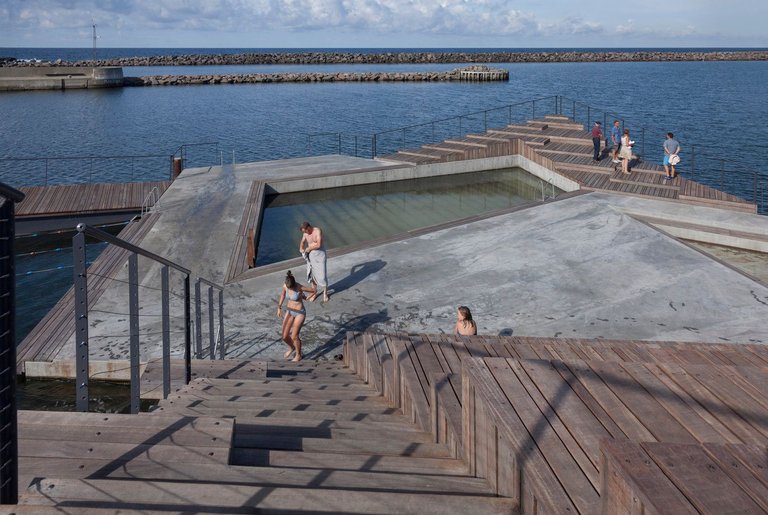
Hasle Harbour Bath, Danish Island of Bornholm. (archdaily)
Makoko Floating School, Lagos, Nigeria
The Makoto Floating School is a building prototype that can move around the coastal region prone to flooding. The Makoko is a coastal community and a slum of the Lagos Lagoon in Nigeria. The floating school has a triangular frame design and is a three-story made from bamboo and wood. The NLE Architect design the Makoko Floating School with the financial help of UNDP and Heinrich Boell Foundation. The floating school interlocks with the floating residences in the lagoon.
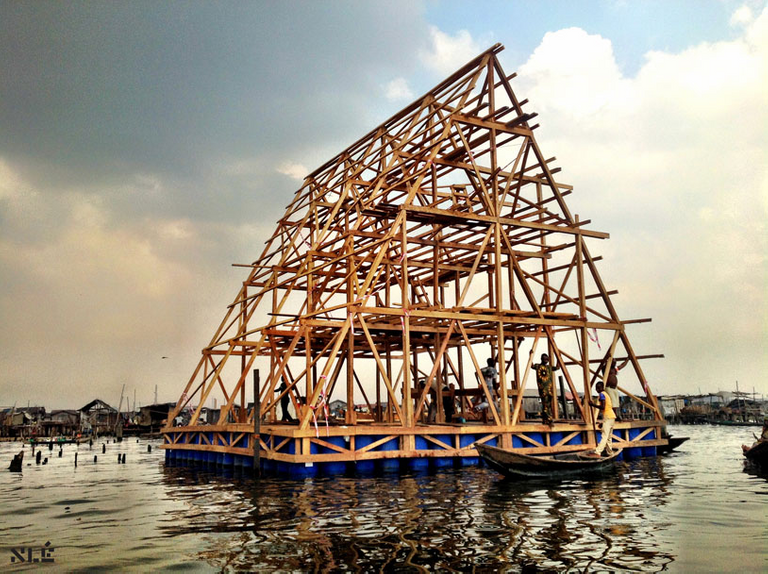
The structural design of Makoko Floating School. (urbannext)
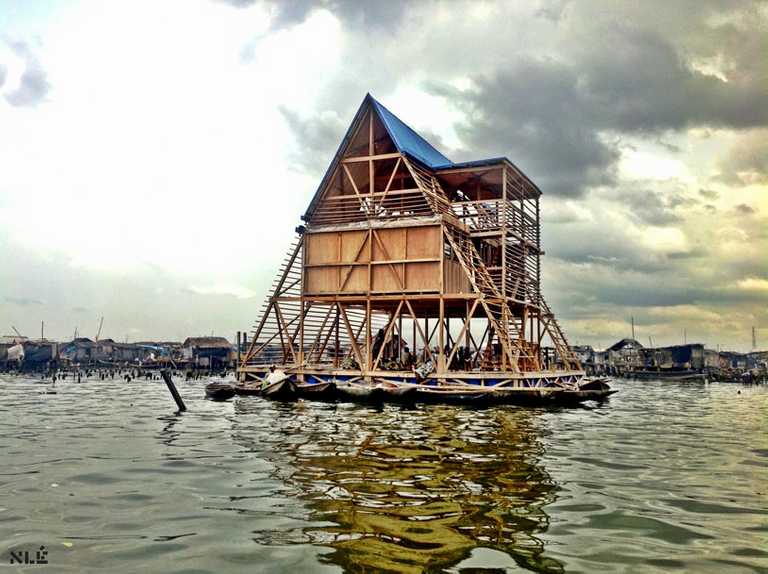
Makoko Floating School, Lagos, Nigeria. (urbannext)
The Exbury Egg, Hampshire, England
The Exbury Egg is the residence of Artist Stephen Turner in the Beaulieu River, Hampshire, England. Turner worked with designers to create the Egg. He lived in the Egg to examine the changing marine ecology in Estuary. It is a project that raises awareness on preserving sensitive places like the Estuary. The Space Placemaking and Urban Design (SPUD Group) led the project. The nesting seabirds on the shoreline of the Estuary became the inspiration of the Egg. They build it using locally available material for boat building.
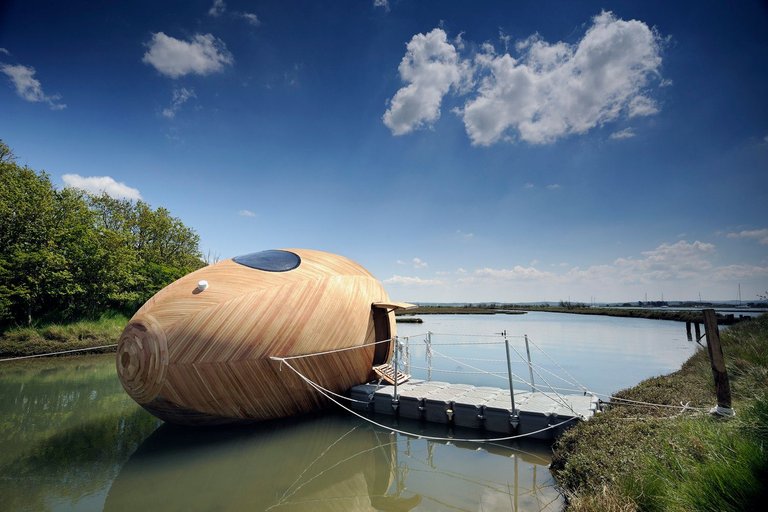
The Exbury Egg, Hampshire, England. (archdaily)
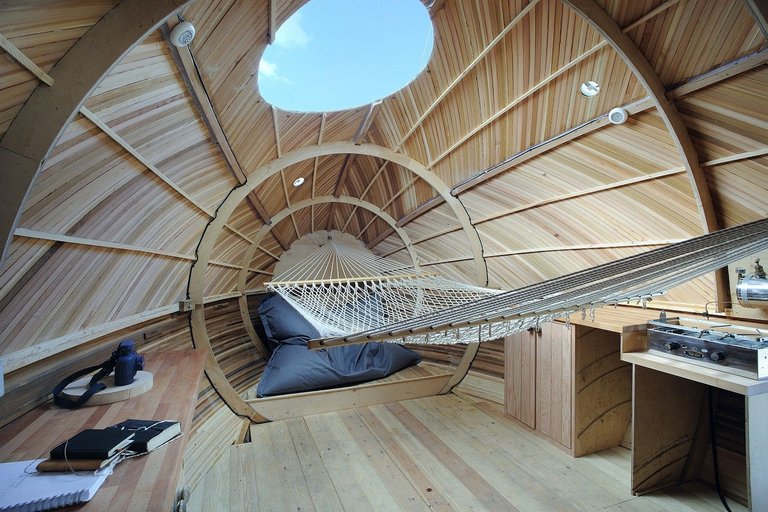
The interior of the Exbury Egg, Hampshire, England. (archdaily)
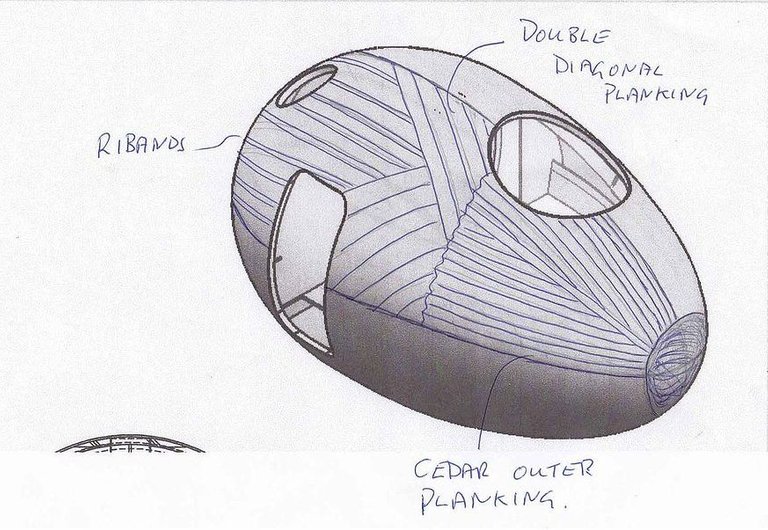
The inital sketch of the Exbury Egg, Hampshire, England. (archdaily)
Floating architecture address the need for a sustainable structure that adapts to the rising sea levels, extreme weather, and limited development sites. Most of it uses biodegradable materials that are available in the locality. It houses different functionality like theaters, schools, and housing. Thus, floating architecture provides a different approach to sustainable design.
References
- Archipelago Cinema / Buro Ole Scheeren + Film on the Rocks Yao Noi Foundation
- Archipelago Cinema: a floating cinema in Thailand
- Drijf in Lelystad / Attika Architekten
- Seoul Floating Islands / Haeahn Architecture & H Architecture
- Hasle Harbour Bath / White
- Makoko Floating School / NLÉ
- Exbury Egg / PAD studio + SPUD Group + Stephen Turner
- Floating Architecture is Making Waves
- How floating architecture could help save cities from rising seas
https://twitter.com/juecoree/status/1375843291309088768
Greetings @juecoree, just dropping by to congratulate you. Continue to surprise us with your interesting and unusual architectural content.
The Architecture+Design Community is an Active Member of the OCD Communities Incubation Program
Find out more about the community comprehensive guidelines
Appreciate the support @aplusd!